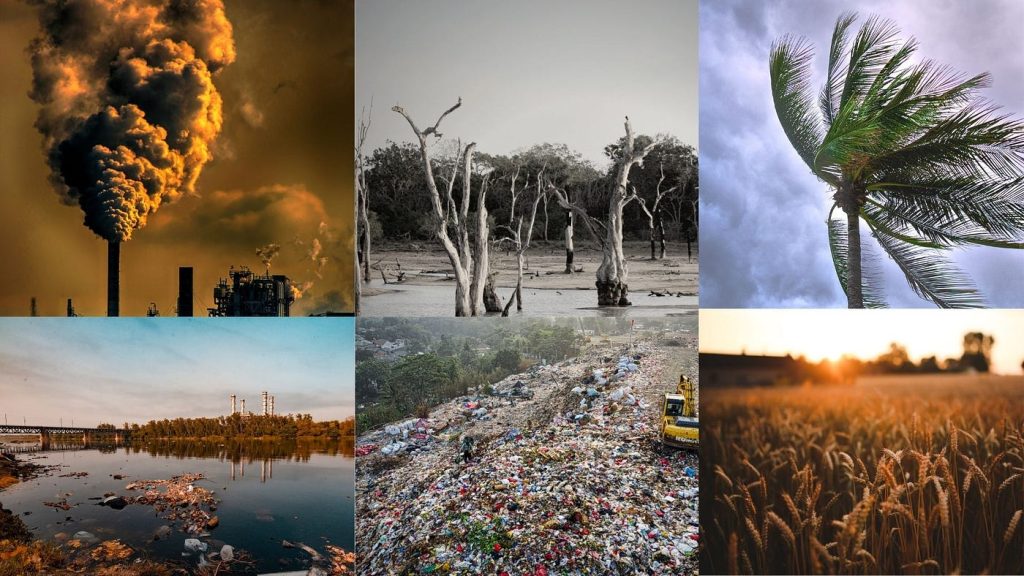The COVID-19 pandemic has shown us the devastating impact that a new infectious disease can have on the world. As the climate changes, we can expect to see more pandemics emerge. This is because climate change creates the perfect conditions for spreading diseases. Climate Adaptation Strategies must be addressed to reduce the high risk of infections.
Warmer temperatures are allowing mosquitoes and ticks to survive in more places, which is leading to the spread of diseases like malaria and Lyme disease. Rising sea levels are flooding coastal areas, displacing people and animals, and creating new opportunities for disease transmission. Moreover, more extreme weather events are disrupting food production and sanitation systems, which can lead to outbreaks of waterborne diseases.
For example, the Zika virus, which spread rapidly through the Americas in 2016, is transmitted by mosquitoes that thrive in urban areas with poor sanitation. The Aedes aegypti mosquito, responsible for spreading Zika, dengue, and yellow fever, is also a significant malaria carrier, killing millions of people annually.
The link between climate change and pandemic diseases is clear. As the planet continues to warm, we can expect an increase in the frequency and intensity of extreme weather events and the spread of insect-borne diseases. This poses a significant threat to global health, emphasizing the importance of taking action to mitigate the effects of climate change.
Tanzania is one of the countries most vulnerable to the impacts of climate change. The country is already experiencing more frequent and intense droughts, floods, and heat waves. These events are devastatingly impacting food production, water supplies, and public health.
For instance 2019, a drought in Tanzania caused a severe food shortage. This resulted in increased malnutrition, making people more susceptible to infectious diseases. The drought also led to a rise in waterborne diseases, such as cholera and typhoid. Climate adaptation strategies were not prioritized, particularly in areas with insufficient climate education among citizens.
In addition to these direct impacts, climate change indirectly affects public health in Tanzania. As temperatures rise, the spread of malaria is increasing in the country. Malaria is a major killer in Tanzania, and it is estimated that the disease claims around 70,000 lives annually.
Reducing the Risk of Pandemic Diseases
- Protecting and restoring ecosystems: Healthy ecosystems are essential for preventing the spread of disease. When forests are cleared, wetlands are drained, and oceans are polluted, ideal breeding grounds are created for mosquitoes, ticks, and other disease vectors.
- Promoting biodiversity: Biodiversity is crucial for our health. Loss of biodiversity removes the natural barriers that protect us from diseases. For example, bats, natural predators of mosquitoes, also aid in pollination. Declines in bat populations enable mosquitoes to thrive and spread diseases.
- Reducing reliance on fossil fuels: Burning fossil fuels releases greenhouse gases into the atmosphere, contributing to climate change. Reducing fossil fuel dependence can slow climate change and decrease the risk of pandemic diseases.
- Investing in renewable energy: Renewable sources like solar and wind power don’t emit greenhouse gases. Investing in renewable energy diminishes reliance on fossil fuels and decelerates climate change.
- Improving sanitation and waste management: Poor sanitation and waste management contribute to waterborne diseases like cholera and typhoid. Enhancing sanitation and waste management can reduce the risk of such conditions.
- Protecting forests: Forests are vital in climate regulation and biodiversity habitat. Safeguarding forests can mitigate climate change effects and lower the risk of pandemic diseases.
- Protecting health systems: Strengthening health systems’ capacity to respond to pandemics is vital. This requires investment in hospitals, clinics, and healthcare facilities, along with increased training and proper equipment for healthcare workers.
- Developing new vaccines and treatments: Rapid responses to new pandemics involve the swift development of vaccines and medicines. Ensuring affordability and accessibility to all is equally crucial.
- Educating the public: Public education on pandemics is essential for self-protection and family safety. This includes information on infection prevention, seeking medical care, and managing the psychological impact of a pandemic.
The government can lead by Investing in renewable energy and energy efficiency, protecting forests and wetlands, improving sanitation and water management, strengthening early warning systems for disease outbreaks, building climate-resilient infrastructure, and educating the public about climate change and pandemic risks.
Private Organizations can contribute by investing in research and development of vaccines, treatments, and diagnostics for infectious diseases and supporting efforts to strengthen global public health systems and reduce greenhouse gas emissions.
Individuals can play a part by reducing their carbon footprint, supporting climate-friendly businesses and organizations, advocating for climate action, and educating themselves and their families about climate change and pandemic risks.
Joint Efforts to Mitigate Climate Change’s Impacts
The Tanzanian government partnered with the World Bank to invest in renewable energy and energy efficiency projects. These initiatives are reducing greenhouse gas emissions and enhancing air quality. The private sector funded projects to conserve forests and wetlands in Tanzania, preserving biodiversity and reducing flood and waterborne disease risks.
Non-governmental organizations (NGOs) improved sanitation and water management, reducing the spread of waterborne diseases like cholera and typhoid. The Tanzanian government established a national early warning system for disease outbreaks and other Climate adaptation strategies, swiftly detecting and containing conditions.
The Tanzanian government constructed climate-resilient infrastructure, such as seawalls and dams, to protect against climate change impacts like floods and droughts. A public awareness campaign by the Tanzanian government educates the public about climate change and pandemic risks, empowering them to safeguard themselves and their families.
Through these actions, we can collaboratively shape a healthier, more sustainable future for everyone.


Thanks for this great article to raise awareness on the nexus of Climate Change and health. However, allow me to kindly correct on ghe quotation used in the article stating that Aedes mosquitoes carry malaria. Aedes doesn’t carry or aid the spread of malaria but other diseases like Dengue, Zika virus etc.
Thanks and keep up the good work.
Aloyce Urassa